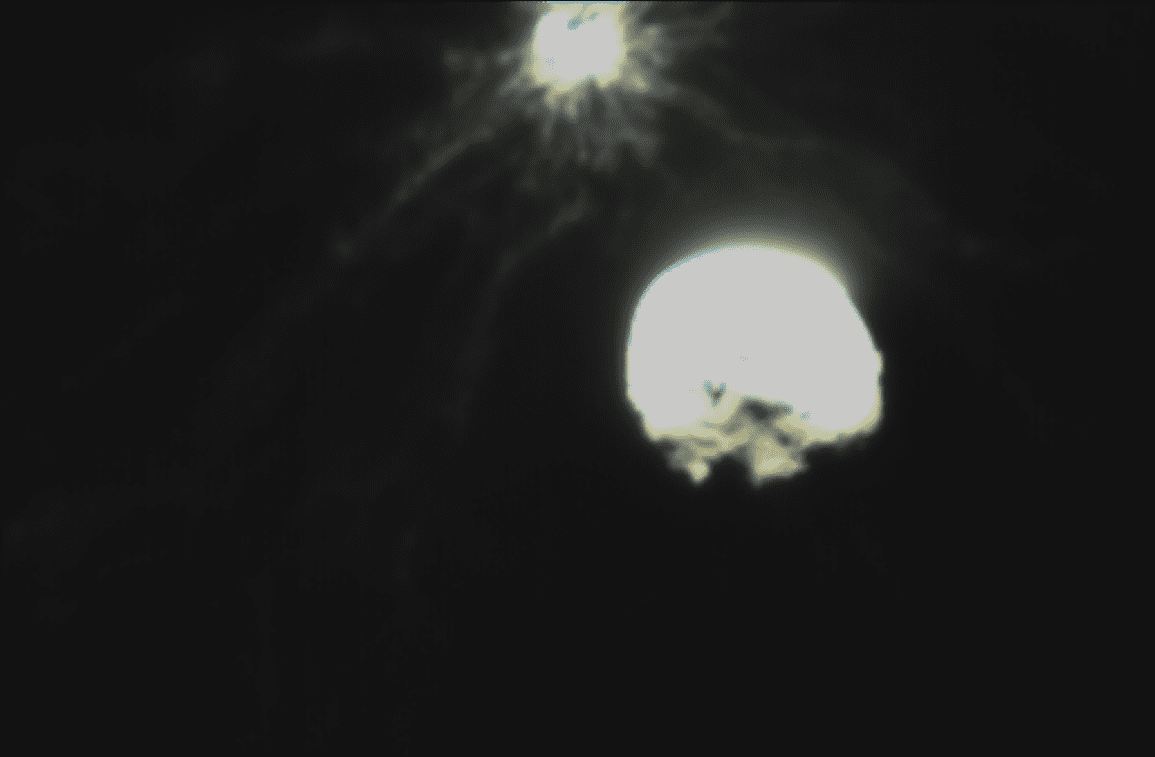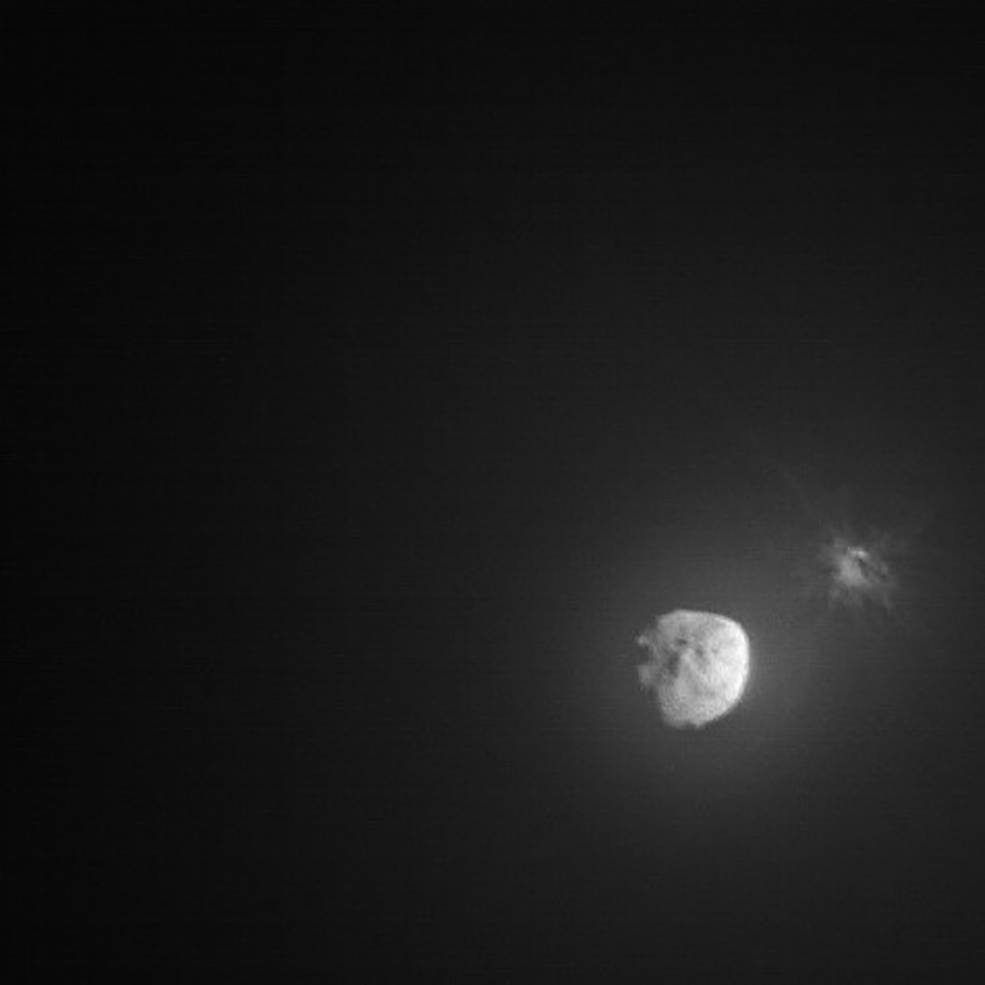Fresh satellite images have been released showing before and after shots of NASA’s DART mission that successfully crashed a spacecraft into an asteroid over 11 million kilometers (6.8 million miles) deep into space.
The Italian Space Agency has released its first images from the tiny Light Italian Cubesat for Imaging of Asteroids (LICIACube) spacecraft – DART’s companion until it was released 15 days ago – showing the crucial moment of impact, as well as the aftermath of the collision.
“A pre-impact and a post-impact image. You can see the flash produced by the impact of DART,” Elisabetta Dotto, Science Team Lead of the National Institute of Astrophysics (INAF) in Italy, said at a press conference.
On Monday, the first-of-its-kind DART mission saw an uncrewed spacecraft collide with asteroid moonlet Dimorphos, a small body just 160 meters (530 feet) in diameter, that orbits a larger, 780-meter (2,560-foot) asteroid called Didymos. LICIACube was sent along to catch a bird’s eye view of the events.

Image captured by the Italian Space Agency’s LICIACube a few minutes after the intentional collision of NASA’s DART mission with its target asteroid, Dimorphos, captured on Sept. 26, 2022. Image credit: ASI/NASA
“Everyone knew it was a very risky mission,” added Simone Pirrotta, Program Manager of the Italian Space Agency.
Incredibly, the spacecraft hit the asteroid only 17 meters off its bullseye target. not bad for an object that traveled over 11 million kilometers and collided moving at 6.6 kilometers per second.

Another image from LICIACube taken minutes after impact. Image credit: ASI/NASA
The DART impactor managed to capture some incredible live images as it impacted Dimorphos, but the spacecraft was destroyed in the process.
“It’s absolutely fantastic to see the successful death of the DART mission, as it crashed into the tiny asteroid Dimorphos. It’s actually slightly surreal – I think it’s only the second time I’ve seen astronomers so thrilled to see a spacecraft destroyed – but in this case, that destruction tells the story of a job very well done,” commented Professor Jonti Horner, astronomer and astrobiologist at the University of Southern Queensland, Australia.
While the sensational spectacle is over, now comes the important part. Astronomers are busy observing Dimorphos to learn how DART’s impact altered the asteroid’s orbit around Didymos. These new images from LICIACube are providing an early glimpse of that.
“Now the science can start. From this one impact event, we can learn more about the mechanics of impacts into small bodies, momentum transfer, and the ability to use artificial impactors to nudge asteroids out of their orbits. This hasn’t been done before, although impact simulations have been made in the past,” said Katarina Miljkovic, Associate Professor at Curtin University Space Science and Technology Centre.
A number of other telescopes and observatories also caught the action, including the JWST and the ATLAS project. Keep your eyes peeled: you’re likely to see a load more incredible images from this daring mission over the coming weeks.
Source Link: First Aftermath Images Of NASA's Daring DART Asteroid Crash Released